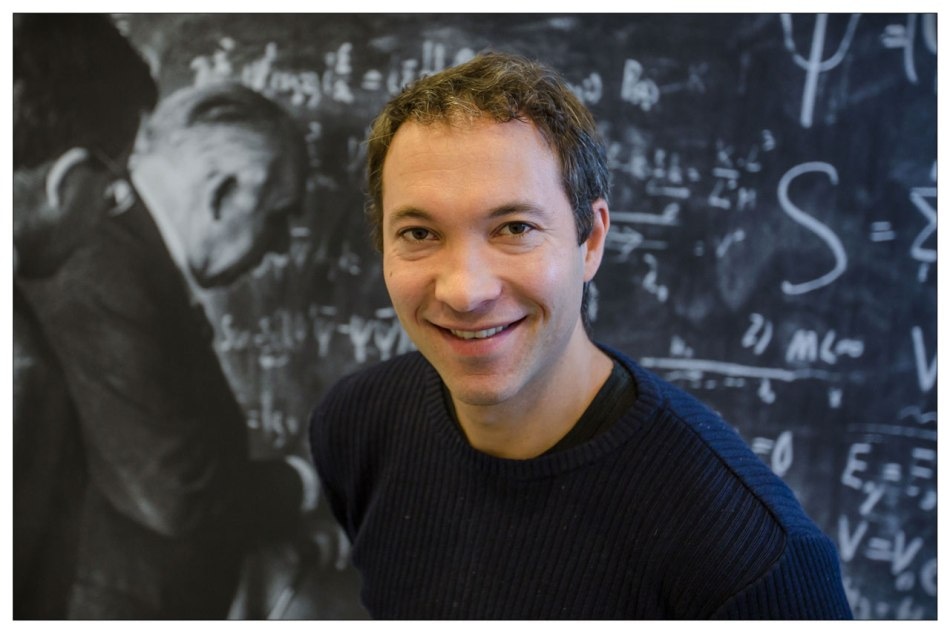Jul 10 2017
Due to magnetism iron should - theoretically - be a poor superconductor. Nevertheless certain ironbased materials possess fine superconducting properties. Why? Because the five unbound electrons found in iron - as a result of individual modes of operation, it turns out - facilitate superconductivity.
This new, long sought-for explanation - appearing in this weeks issue of Science - is the result of international co-operation between experts from the Niels Bohr Institute (NBI) i Copenhagen, Denmark, and colleagues from a number of other scientific institutions in Europa and USA.
 By establishing this the scientists have at the same time succeeded in widening the general understanding of another group of newcomers - copperbased superconductors - who, like ironbased superconductors, operate by means of strong electron-reciprocal actions and at relatively high temperatures, says Brian Møller Andersen. (Credit: Niels Bohr Institute)
By establishing this the scientists have at the same time succeeded in widening the general understanding of another group of newcomers - copperbased superconductors - who, like ironbased superconductors, operate by means of strong electron-reciprocal actions and at relatively high temperatures, says Brian Møller Andersen. (Credit: Niels Bohr Institute)
"This may come in very handily in future attempts to 'tailor' new superconductors", says Brian Møller Andersen, condensed matter physicist at NBI and one of the scientists behind the research.
Brian Møller Andersens field is 'exotic' phases in condensed matters - i.e. phases and conditions where materials display reactions markedly different from what is seen under socalled normal circumstances - and he specializes in superconductors: Matters and materials, typically metals or alloys, that can transmit electricity without loss of energy, in reality a cable void of resistance.
Such superconductors exist and can e.g. be found in the vast number of magnets which CERN, the European Organization for Nuclear Research, has installed in its subterranean particle accelerator (LHC) in Geneva, Switzerland - which makes it is possible to study particles at sub-atomic level. The research community is, however, also very eager to develop superconductors for rather more 'mundane' purposes - not least transmission of electricity to the general public - but still needs to come up with economically viable solutions.
The need for such transmission systems undoubtedly exists - the present international system, including Denmark - is based on high voltage cables which have significant resistance resulting in transmission-losses of up to 10 percent 'along the road' from powerplant to end-consumer.
But in spite of more than one century of intense research science has not yet been able to come up with superconductors that function at 'room-temperature' - hence the situation still being that materials tested for superconductivity need to be cooled well down toward absolute zero (-273,15 Celcius).
Even when working with the most recent generation superconductors the cooling-down will always have to exeed -100 Celcius - and as things stand, cooling demands more energy than what could theoretically be saved by transmitting electricity via superconductor-based cables made from the materials examined. Which is why the method as such is not yet economically viable.
And that has been the bottom line ever since 1911 when the Dutch scientist Heike Kammerlingh Onnes presented THE (italics) Scientific sensation of that year by demonstrating that very low temperatures can indeed make some materials display 'exoic' properties in the form of superconductivity.
Just two years later Onnes was awarded the Nobel Prize, which really set off the - still ongoing - hunt for superconductors.
Stack of iron sheets
A member of the youngest generation of zero-resistance conductors - iron-based superconductors - are at the very center in the report researchers from NBI, Cornell University (USA), Brookhaven National Laboratory (USA), University of St. Andrews (Scotland) and from a number of other scientific institutions publish in this weeks issue of Science.
This type of superconductors was developed 7-8 years ago at Tokyo Institute of Technology by professor Hideo Hosono, a Japanese materials specialist - and he really caught the attention of colleagues from all over the globe when he published his research.
Iron, being magnetic, has long been seen as a no-go when selecting candidates for new superconductors - for the very reason that magnetism and superconductivity are traditionally considered incompatible. Professor Hosono, nevertheless, succeeded in constructing a new type of superconductors by using as building materials certain iron derivates which he manipulated, iron selinide (FeSe) being one of them.
In principle Hosono stacked a large number of ultra-thin iron sheets - gluing them together with heavy atoms - and thus ended up with a glulam-like construction with "fine superconductive properties", says NBI-physicist Brian Møller Andersen: "And with superconductivity appearing at roughly -150 Celcius".
Not even Hosonos iron selinide superconductors are, however, economically viable for energy transmission purposes. And since the Japanese professor published his results one question has remained un-answered: What is, more specifically, prompting the superconductivity in this glulam-like iron construction - and how can one, given the presumed incompatibility between magnetism and superconductivity - theoretically understand the fine superconductive properties in Hosonos sheets?